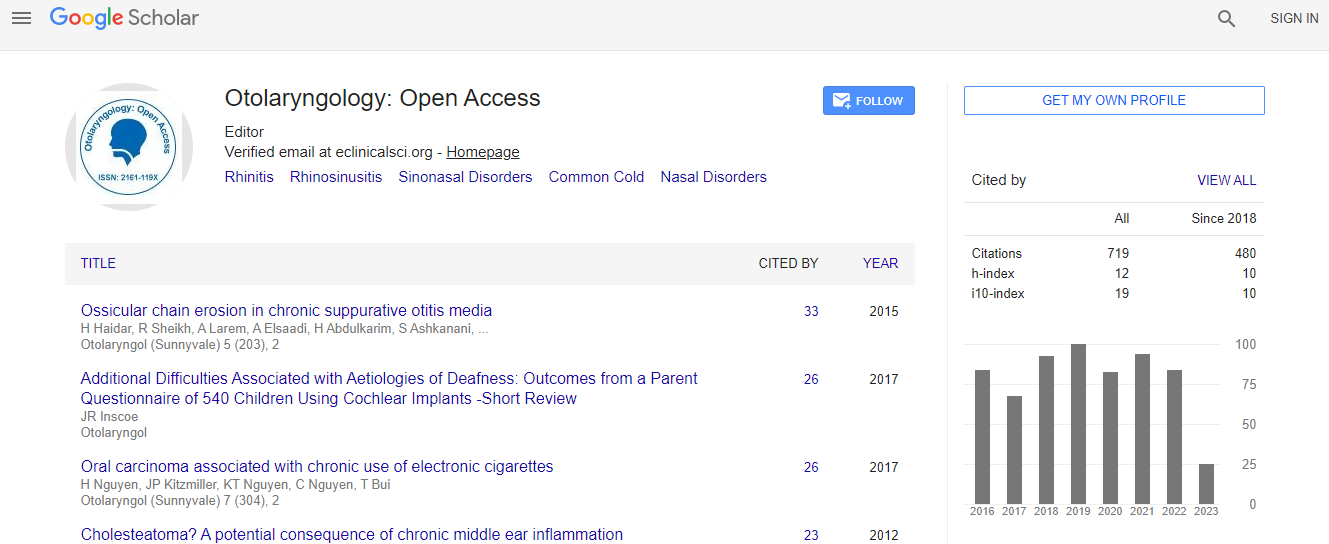Our Group organises 3000+ Global Conferenceseries Events every year across USA, Europe & Asia with support from 1000 more scientific Societies and Publishes 700+ Open Access Journals which contains over 50000 eminent personalities, reputed scientists as editorial board members.
Open Access Journals gaining more Readers and Citations
700 Journals and 15,000,000 Readers Each Journal is getting 25,000+ Readers
Google Scholar citation report
Citations : 925
Otolaryngology: Open Access received 925 citations as per Google Scholar report
Otolaryngology: Open Access peer review process verified at publons
Indexed In
- Index Copernicus
- Google Scholar
- Sherpa Romeo
- Open J Gate
- Genamics JournalSeek
- RefSeek
- Hamdard University
- EBSCO A-Z
- OCLC- WorldCat
- Publons
- Geneva Foundation for Medical Education and Research
- ICMJE
Useful Links
Recommended Journals
Related Subjects
Share This Page
Ear reconstruction using the Antia-Buch principles
5th Global Summit and Expo on Head, Neck and Plastic Surgery
Osamah Al-Hayo, Vlad Ilie, Victor Ilie and Mihaela Lefter
Nepean Hospital, Australia Gosford Hospital, Australia
Posters & Accepted Abstracts: Otolaryngol (Sunnyvale)
Abstract
Purpose: The reconstruction of the ear following resection of part of it especially the helix, scapha and anti-helix is a confronting problem for plastic surgery. Many techniques had been described to approach this issue and to minimize the complications raised from resection of tumors as well. We present our experience with ear reconstruction using chondrocutaneous flaps and a modified Antia-Buch technique in order to obtain a more realistic result with least complications. Methodology: The study is retrospective in design with accurate description of the ear reconstruction technique that was performed by the same surgeon on all patients. Twenty (20) patients included in this study. The collected data included demographics, any post-operative complications and post-operative measurements of both reconstructed and normal ears. Results: There were no post-operative complications, all tumors were completely excised. No flap loss, wound dehiscence or haematoma has occurred. The mean residual defect was 21.8 mm ranging from 14 mm to maximum of 30 mm in size. There were differences noticed in height, width and projection. Conclusion: This technique allows preservation of anatomical landmarks and contour of the ear and therefore maintaining normal overall 3D appearance of the reconstructed ear. Reconstruction of 10 mm defects are basically allowed through this technique with no loss in size. Due to the potential lobule distortion, we recommend applying this technique to defects up to 25 mm.Biography
Email: sam.hayo86@gmail.com

 Spanish
Spanish  Chinese
Chinese  Russian
Russian  German
German  French
French  Japanese
Japanese  Portuguese
Portuguese  Hindi
Hindi 
